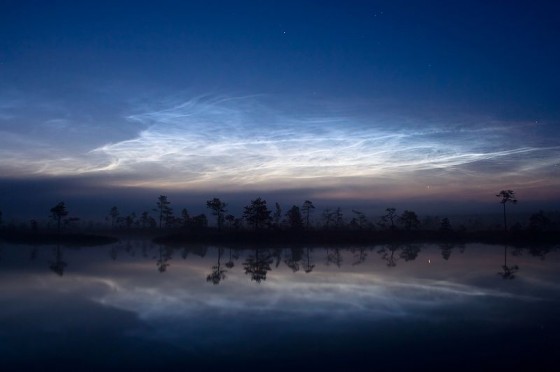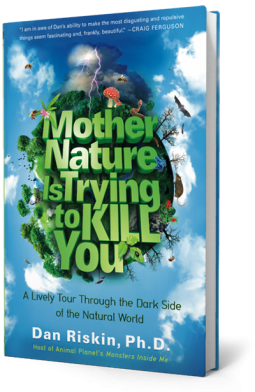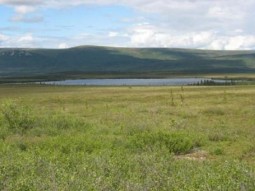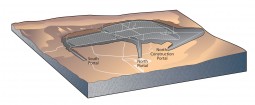Listen here for an extended conversation with John Warner about the difference between enthalpy and entropy and how it relates to our scientific world view.
Podcast: Play in new window | Download (Duration: 3:15 — 3.0MB)
Subscribe: RSS
The KGNU Science Show
Listen here for an extended conversation with John Warner about the difference between enthalpy and entropy and how it relates to our scientific world view.
Podcast: Play in new window | Download (Duration: 3:15 — 3.0MB)
Subscribe: RSS
CU-Boulder Electrical Engineering Emeritus Professor Frank Barnes is the past president of the BioElectroMagnetics Society. He recently chaired a National Research Council panel on research priorities related to the potential health effects of exposure to radio frequency energy from the use of wireless technology, such as cell phones. As a scientist, Frank Barnes recently talked with a citizen activist, Katie Singer, about her new book, An Electronic Silent Spring. This is an extended version of the interview we broadcast on June 3rd 2014. — Shelley Schlender
Podcast: Play in new window | Download (Duration: 51:53 — 47.5MB)
Subscribe: RSS
 For the patient and interested listener, here’s more of How On Earth host Beth Bartel’s conversation about space dust with University of Colorado’s Mihaly Horanyi. We talk about why we should colonize the moon, how Dr. Horanyi got into studying dust in the first place—which is a very interesting Cold-War-era story—how space dust may give us hints about climate change ( via the phenomenon of “night-shining” or noctilucent clouds), and what zodiacal light is.
For the patient and interested listener, here’s more of How On Earth host Beth Bartel’s conversation about space dust with University of Colorado’s Mihaly Horanyi. We talk about why we should colonize the moon, how Dr. Horanyi got into studying dust in the first place—which is a very interesting Cold-War-era story—how space dust may give us hints about climate change ( via the phenomenon of “night-shining” or noctilucent clouds), and what zodiacal light is.
Podcast: Play in new window | Download (Duration: 15:06 — 20.8MB)
Subscribe: RSS
Today marks the 50th anniversary of the 1964 Great Alaska Earthquake. To commemorate the quake, we’re posting this extended version of the interview we broadcast on March 25, 2014, with Dr. Mike West, the Alaska State Seismologist and Director of the Alaska Earthquake Center. How On Earth host Beth Bartel talked with Dr. West about his recent paper, “Why the 1964 Great Alaska Earthquake Matters 50 Years Later,” published in Seismological Research Letters.
To whet your appetite, here are some of the topics we covered:
Podcast: Play in new window | Download (Duration: 34:32 — 47.5MB)
Subscribe: RSS
 Welcome to the Spring Pledge Drive edition of How On Earth. I’m this quarter’s Executive Producer, Jim Pullen.
Welcome to the Spring Pledge Drive edition of How On Earth. I’m this quarter’s Executive Producer, Jim Pullen.
We, the How On Earth team, encourage you to take a different take on the world, to examine assumptions, ideas and evidence critically. The great philosopher of science Karl Popper, a champion of the essential role of refutation in science, wrote in The Poverty of Historicism,
For if we are uncritical, we shall always find what we want: we shall look for, and find confirmations, and we shall look away from and not see, whatever might be dangerous to our pet theories.
Consider our relationship with the rest of the natural world… Do we humans have a special vitality that sets us apart or can we be best understood as just another smart ape? It’s an essential question. In our feature interview, our guest scientist, bat biologist and Animal Planet host Dan Riskin, challenges us to reconsider–humorously, disgustingly, creepily, scarily–our perceptions of nature. Dan fields questions like, what’s wrong with ‘natural’ marketing? Are killer whales cuddly? Should we feel sympathy for bed bugs? Is a father’s love the same for humans as for water buffaloes? How we can acknowledge nature in its rich complexity and have a just and loving world beyond the grip of natural selection? All this and botfly on the brain.
Dan got me thinking–a good thing–and I think he’ll get you thinking too!
Your support during KGNU’s pledge drives is critical to keeping us on the air, so a huge thanks to our listener-members who pledged during the drive! If you haven’t yet joined the team, now(!) is the right time to fortify The Show That Makes You Smarter and community radio, KGNU! Pledge securely online at kgnu.org or call 303-449-4885. Pick up one of our great science book thank-you gifts, too.
Many thanks to Beth Bartel, Maeve Conran, and Joel Parker for hosting the pledge drive show! (Go here for the pledge show with the rich banter.)
Thanks again!
Jim and the How On Earth team
Listen to my interview with Dan Riskin:
Podcast: Play in new window | Download (Duration: 14:10 — 6.5MB)
Subscribe: RSS

I’m Shelley Schlender for How on Earth. Here’s an extended version of an interview about how Native Americans came to be. It’s about a CU-Boulder study that appeared in Science Magazine in February 2014, and promptly made headlines around the world. The study involves top-notch detective work that shows how, almost 30,000 years ago, a major Ice Age trapped Asian explorers on a land bridge between Asia and Alaska for 10 THOUSAND years. Back then, the “Beringia” (bare-IN-gee-ah) land bridge was 30 miles long and 600 miles wide. Glaciers had buried Northern America, but Beringia was just warm enough, the trapped explorers survived and thrived. They stayed in that pit stop for so many thousands of years, it gave time for the inevitable mutations that can happen in DNA to be concentrated and become distributed throughout the entire Beringian community, which probably included a few thousand people. When the glaciers finally receded around 15,000 years ago, that DNA signature was with the small band of “Beringians” who then began settling in the Americas. Their settlements were successful. Their numbers grew over time to become the millions of people today who still carry “Beringia” in their DNA. Today, we call that distinct, Beringian DNA proof that someone’s ancestors were “Native Americans.”
Podcast: Play in new window | Download (Duration: 41:35 — 38.1MB)
Subscribe: RSS
Kathleen Tierney, Natural Hazards Center, Boulder
Kelley Mahoney, CIRES, Boulder
(LISTEN 15 Minutes) As for WHY this storm happened, KGNU’s Jim Pullen talks with Kelly Mahoney, a research scientist at CU Boulder’s Cooperative Institute for Research in Environmental Sciences – also known as CIRES. Mahoney says the Rocky Mountains are the most challenging part of the country for making climate predictions. But the Rocky Mountains might indeed have more dry periods punctuated by more intense and very wet superstorms.
“We have a pretty good handle on the trends that we might expect along the eastern two thirds of the country and also in the southwest. So in the eastern part of the country, we do expect things to get a little more moist. And the complete opposite in the desert Southwest. Regarding average precipitation, we expect to see it drying. So that places the Colorado Front Range in the unique position of being right between the two climate signals. For the Colorado Front range, I think most folks say we feel like the region will see a mean drying, meaning longer longer stretches of dry punctuated by an increase in extremes. But it’s still definitely an area of study. Lots of people are continuing to look into this.”
Marcus Moench, Institute for Social and Environmental Transition, Boulder
LISTEN (20 Minutes) The Institute for Social and Environmental Transition does a lot of work globally regarding flooding and climate and environment protection. Speaking with Jim Pullen, their president, Marcus Moench, says Boulder has fared pretty well, though it faces challenges.
“The main flood areas, the infrastructures through Central Boulder has functioned enormously well. The underpasses and things like that. We face, as everyplace does, a huge challenge particularly along minor streams, where it’s impossible to keep the vegetation clear, to keep culverts the size you want. And where there are contrasting interests. For example, if you have a grate in front of a school such as Flatirons school that protects kids from falling into the culverts, but at the same time it becomes the first thing that clogs and floods the street, the minute any flow comes down. “
But Moench says that even in usually arid Boulder, we can learn lessons from wetter climates, such as those in Asia:
“All the infrastructures, the water heaters, the sewer, things like this, The water supply stuff is located much higher up. The electricity. We put a lot of that infrastructure into our basements. And as people are mucking out here, that’s one of the largest costs a lot of people will face is replacing that water heater, that dryer, the stuff that’s in the basements. “
For a list of resources for people in our communities dealing with these disasters, check KGNU

I’m Shelley Schlender. This is an extended interview from the report we broadcast on August 20th, 2013, about a new study from the University of Rochester that indicates that too much of an essential nutrient, copper, might promote Alzheimer’s disease. Continue reading “Copper Might Promote Alzheimer’s – Extended Version”
Podcast: Play in new window | Download (Duration: 26:33 — 24.3MB)
Subscribe: RSS

On Tuesday, August 13th, the US Court of Appeals-DC Circuit ordered the Nuclear Regulatory Commission to evaluate the application for the Yucca Mountain Nuclear Waste Repository. Dr. Bill Alley and Rosemarie Alley talk with us about the significance of the decision. The Alley’s just published Too Hot To Touch: The Problem of High-Level Nuclear Waste with Cambridge University Press. They were also our guests on August 13th’s How On Earth!
Host: Jim Pullen
Producer: Jim Pullen
Listen to the show:
Podcast: Play in new window | Download (Duration: 19:26 — 17.9MB)
Subscribe: RSS

Does fracking cause earthquakes? KGNU is hosting a discussion on the correlation between earthquakes, fracking, deep injection wells, and geothermal projects. Join seismologists Dr. Bill Ellsworth, USGS Menlo Park, Dr. Emily Brodsky, UC Santa Cruz, and Dr. Nicholas van der Elst from Columbia’s Lamont-Doherty Earth Observatory to learn the latest about anthropogenic (human-caused) earthquakes, including the Colorado connection. On KGNU’s The Morning Magazine, Wednesday, July 31, at 8:35AM. And to learn more before the show, listen to this short feature on Free Speech Radio News. To listen to the conversation, go here. Support your community radio, KGNU!